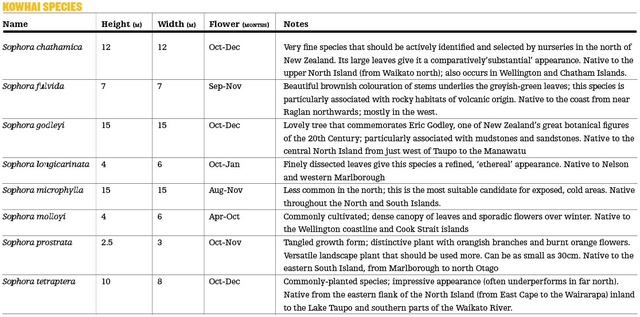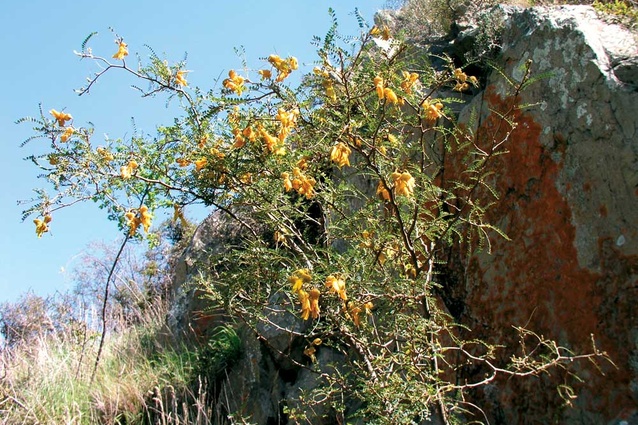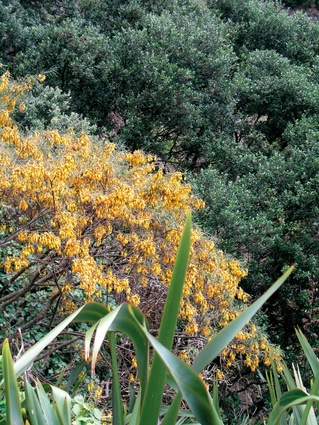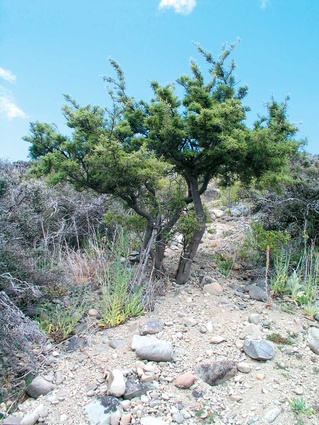Golden glow
Philip Smith investigates the regional variations of a New Zealand botanical staple – the kowhai.
Large, bright flowers are effectively 80 per cent signal and 20 per cent sex. The colours and forms that people find so attractive fulfil a role as markers, to rouse the attention of the animals that pollinate many flowers. As spring takes over from the New Zealand winter, several of our kowhai broadcast their own vibrant signals to native birds and insects, announcing that their nectaries are open for business.
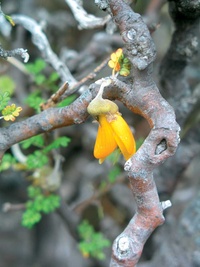
It is now a full decade since botanists clarified the relationships between our kowhai, increasing the number of species within the flora from the three that were traditionally recognised, to eight species. However, knowledge of this is still patchy among gardeners and landscapers – hence the motivation for this planting guide.
Why is it important to know these differences? Because plant material is being moved around the country for revegetation projects and smaller scale plantings, thereby bringing well-marked species into contact with each other. Now, I’m no fan of zealous adherence to eco-sourcing in many situations, but kowhai is a legitimate case in which hybridisation (caused by cultivation) does represent a threat. The other reason is that these are distinct plants that, accordingly, offer differing opportunities for landscapers.
For example, within the Auckland region, the subdued leaf colour, spreading form and tightly packed leaflets of Sophora fulvida provides a very different look from S. chathamica and S.microphylla (two other locally occurring species). Furthermore, a little extra knowledge can inform us that S. chathamica lacks the tangled juvenile phase that S. microphylla exhibits (as well as normally flowering earlier in the lifecycle of individual plants).
Moving further south, the popular Sophora tetraptera is found in eastern parts of the North Island. This species is widely planted by gardeners and landscapers, due to its large leaves and the absence of a juvenile divaricating stage. Sophora godleyi is associated with particular stone substrates from the Central North Island to the Manawatu, where it can develop into magnificent specimens – some of the best flowering displays for kowhai are found in forests in this stretch of the country.
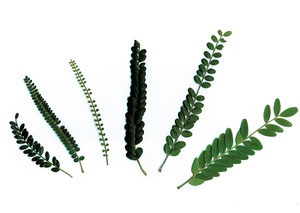
The rocky Wellington coastline (including islands of Cook Strait) is the home of the compact species Sophora molloyi. This shrubby kowhai, which has historically been sold as S. ‘Dragon’s Gold’ is notable for producing flowers sporadically over much of the year. On the other side of Cook Strait, the distinctive geology of Nelson has evidently played a major hand in the evolution of Sophora longicarinata. This species, which grows to be a small tree or a suckering shrub, occurs on limestone or marble in that botanically wondrous province. It has a delicate appearance, due to the long ranks of small, widely-spaced leaflets and the fresh green hue of the foliage.
Rounding off the presence of Sophora in New Zealand is the divaricate shrub S. prostrata, which is found on the dry eastern flank of the South Island. This intriguing species can grow to more than 2m, although it is frequently flattened by the challenging conditions that it must endure within nature, especially the persistent influence of wind. The only other Sophora to be found naturally south of Nelson is the widespread Sophora microhylla. This often grows in relatively close proximity to S. prostrata, with which it can form interesting hybrids in the wild.
It is necessary to note here that it does not behove landscapers to possess in-depth botanical knowledge of our native Sophora spp., even though it is beneficial. That is part of the role of specialist nursery people.
What we should endeavour towards as an industry is simply to ask nurseries for our own regional variants – plants that carry the accumulated intelligence of millennia spent in their respective environments.
The list:
